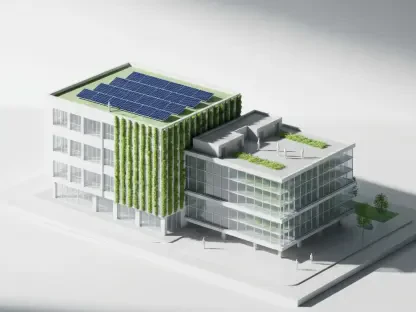The United Kingdom’s construction industry has demonstrated notable resilience and robust recovery, as captured in Glenigan’s Construction Index for June 2025. This index, focusing on projects valued at £100 million or less, lays out an optimistic narrative for the sector during the March-to-May quarter, reflecting significant growth, especially in the face of several years plagued by economic uncertainties. A closer examination underscores residential construction as a leading driver behind this resurgence. However, the growth landscape is complex, marked by both achievements and setbacks. As the industry forges ahead, questions arise regarding the sustainability and distribution of this booming trend, particularly within residential projects.
The report details a remarkable 25% surge in construction projects commencing in recent months, juxtaposed against a 10% increase from comparable data in the preceding year. Residential construction has proven to be integral to this revival, exhibiting a 39% growth over the quarter and an impressive 45% rise compared to the previous year. Private housing projects, a significant component of this sphere, have soared by 55% in recent months, with a 56% increase on an annual scale. Social housing also presents promising figures, escalating by 29% quarterly and 13% annually, illuminating promising prospects in residential developments.
Sector-Specific Dynamics and Challenges
Despite the buoyant trends in residential construction, the non-residential sector tells a different story, revealing challenges that undermine the broader success narrative. The non-residential segment experienced a near-term and yearly decline, contracting by 18% in contrast to 2024 figures, even though it showed stability over the immediate quarter. As the industry grapples with this disparity, retail and education subsectors highlight prominent struggles. Retail construction outputs dropped by 14% over recent months, compounding to a staggering 26% annual decrease. The education sector mirrored this downturn, with a 10% quarterly dip and an alarming 52% fall from past year metrics. This contrasting scenario highlights the nuanced complexities confronting the construction industry at large.
Additional insights reveal setbacks in community facilities, amenities, and health-related projects. Health construction starts experienced a 15% quarterly drop and an 11% decrease on a yearly basis. These troubling figures signify broader uncertainties and unmet potential within these pivotal areas. Addressing these discrepancies becomes essential for the sector’s holistic progress. Finally, while residential projects enjoy a significant upswing, non-residential and civil sectors remain constrained, necessitating keen industry strategies to address ongoing challenges and enhance sector-wide resilience.
Civil Construction Perspectives and Regional Variations
The civil sector’s landscape paints yet another facet of the construction industry’s multifaceted growth narrative. While this segment experienced a 33% decline from the previous year, its latest figures offer a more tempered outlook, with a mere 2% drop in recent measurements. Within the civil domain, infrastructure projects and utility starts continue to confront constraints, marked by modest quarterly reductions of 1% and 2%, respectively. Substantial annual declines of 28% and 38% further compound these issues, pointing to underlying systemic hurdles that demand strategic interventions to fortify civil construction viability.
Regional nuances add further depth to Glenigan’s industry analysis, foregrounding disparities that shape the nation’s construction landscape. The South West and North West regions emerge as notable performers, boasting 27% and 58% growth over the last quarter, respectively, alongside positive annual trends. The North East, West Midlands, and London similarly report substantial growth figures, suggesting distinctive regional dynamics that significantly influence industry trajectories. These locales, especially vibrant in residential construction, encapsulate the multifaceted dimensions steering the broader construction boom.
Economic Projections and Implications
The Construction Index for June 2025 reveals that the United Kingdom’s construction industry has shown remarkable stability and recovery. Focusing on projects valued at £100 million or less, the index paints a hopeful picture for March-to-May, despite previous economic troubles. Residential construction emerges as a key catalyst behind this revival, yet the broader growth remains multifaceted with both achievements and challenges. As the sector advances, concerns about the sustainability and equitable spread of this growth, especially in residential ventures, linger.
The report highlights a striking 25% rise in new construction projects recently, contrasted with a 10% rise from the prior year’s data. Residential construction shows robust growth with a 39% quarterly increase and a notable 45% yearly spike. Private housing projects have surged by 55% in recent months and risen by 56% over the year. Social housing is also on the upswing, climbing 29% quarterly and 13% yearly. These figures point towards promising prospects for residential developments, suggesting a vibrant future for the industry.









